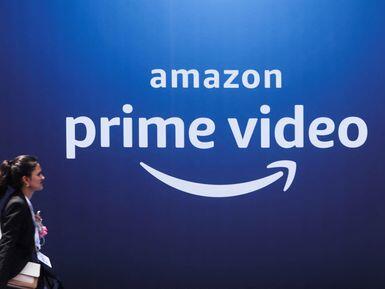Physical Address
304 North Cardinal St.
Dorchester Center, MA 02124
Physical Address
304 North Cardinal St.
Dorchester Center, MA 02124

When Mike Hopkins was approached about leading Amazon Prime Video, he initially viewed it as a perk for the retailer’s two-day delivery service. However, Amazon founder Jeff Bezos had grander visions for the service, aiming to build a full-fledged media company.
“After meeting with Jeff, it was clear he saw an opportunity to build a media company,” said Hopkins, a veteran of Fox Networks, Sony Pictures, and Hulu who has guided Prime Video’s rise to a mainstream Hollywood player over the past four years.
Under Hopkins, Prime Video is transforming into a traditional media company. It boasts its own film studio, theatrical distribution arm, a growing slate of original movies and series featuring A-list actors, and expanding professional sports offerings. Amazon CEO Andy Jassy recently expressed satisfaction with Prime Video’s progress.
Prime Video is positioned to draw a larger share of the projected $28.75 billion in digital advertising revenue this year, as marketers shift away from traditional television. Analysts estimate Prime Video ads could generate $3.3 billion in sales this year and potentially more than double within two years.
Despite these ambitions, Prime Video still trails industry leaders YouTube and Netflix in terms of streaming television viewership in the U.S., according to Nielsen. Netflix remains dominant, despite Prime Video having more entries in Nielsen’s Top 10 most-streamed original series list in 2023.
Nevertheless, Amazon’s aim of creating an all-encompassing entertainment destination is becoming clearer. Amazon Prime Video became the first streaming service to secure an exclusive deal with the NBA, enhancing its year-round sports programming. By 2025, its portfolio will include NFL football, NASCAR racing, WNBA Finals, and Champions League soccer.
In a move threatening traditional studios, Amazon plans to more than double its theatrical releases from six this year to as many as 16 by 2027. This count excludes movies made for international audiences, acquisitions, and direct-to-Prime Video films, making its output comparable to Hollywood’s most prolific studios.
Prime Video’s expenditure increased by $1.7 billion to $13.6 billion this year, reflecting its deeper investment in professional sports and content production, even as other studios tighten their content spending.
Amazon’s talent roster boasts Hollywood A-listers like Reese Witherspoon, Jake Gyllenhaal, and Octavia Spencer, as well as sports stars such as Roger Federer. The service also recruited Scott Stuber, Netflix’s former film chief, to revive the United Artists label.
To attract advertisers, Prime Video recognized the need for premium content and celebrity involvement, according to Jessica Brown of media buyer GroupM. This shift has not gone unnoticed by Madison Avenue, especially after Prime Video began showing ads to its 115 million U.S. viewers in January, making it the largest ad-supported subscription streaming service domestically.
Advertising executives emphasize that Amazon’s purchasing insights offer a unique opportunity, allowing instant sales of goods seen during commercial breaks. This reach is impacting the market significantly, according to Kevin Krim, CEO of marketing analytics firm EDO.
Despite creative struggles, Prime Video has produced hits like “The Boys,” while also experiencing expensive failures such as “Citadel.” According to Hopkins, the creative team is seeking broadly appealing projects with global reach. The ideal project is described as commercial and engaging, akin to an airport novel, and similar to Netflix’s strategy of offering well-executed, popular entertainment.
Amazon focuses on four audience segments, ensuring a steady stream of content budgeted to reflect the size of its potential audience. Larger budgets are allocated to projects with broader appeal, said Hopkins. Prime Video scouts young adult fare, action-thriller series, and female-skewing stories to diversify its content.
Calculated big bets remain part of Amazon’s strategy, exemplified by the $150 million spent on adapting the video game “Fallout” into a critically acclaimed series. Recognizable characters and stories are crucial, as Amazon’s audience tends to seek specific shows, explained an entertainment agent.
The transformation accelerated with Amazon’s $8.5 billion acquisition of MGM, providing a trove of intellectual property for new projects, said Hopkins. This strategy allows Amazon to avoid costly bidding wars and develop its own content.
Sports also play a critical role in Hopkins’s media strategy. Additionally, the final piece of Hopkins’ plan involves recreating “Prime without the shipping.” Amazon’s extensive content library includes ad-supported TV-like channels, rival streaming services, and recent movies available for rent or purchase, all accessible via Prime Video’s redesigned app.
Hopkins highlighted Amazon’s commitment to becoming a meaningfully profitable business in its own right, as CEO Jassy has indicated.
Source: Reuters



